The arcade high score table. A chance to get your name in print on a CRT screen of your local arcade. For those of us fortunate enough to frequent the arcades during the Golden Age of arcade video games, it was an opportunity to establish early bragging rights in the arcades of the early eighties.
For designers of the pioneering arcade titles of the day, the high score table served a couple of purposes. Not only was it a thrill to see yourself as a player on top of the world (well, the mini universe of your local arcade at least) – which of course is what the entire industry was based on – but it also gave arcade goers a reason to return to any particular game, check the scoreboards, and attempt to reclaim (or further cement) their status as a high scorer.
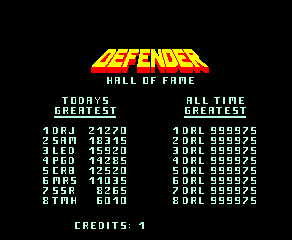
For some gamers, the glory would only last for the day, with a game’s high scores being wiped back to default at the end of the day when everything was powered off. For others, scores would be held in CMOS for example, powered by an onboard battery and would remain on the machine for much longer periods of time. (CMOS, short for “complementary metal-oxide-semiconductor” is a term used to describe a small amount of memory on an arcade PCB capable of storing data even after the main power to it is shut off).
Although it didn’t provide the capability to enter player’s initials, Taito’s Space Invaders is generally regarded as the first arcade game to display the highest score achieved by previous players (although I’m reliably informed that Midway’s Sea Wolf takes the honours by a couple of years). Star Fire by Exidy and Atari’s Asteroids both took this concept one stage further a couple of years later. By providing a “table” of the top 20 and top 10 high scores respectively, they gave players the ability to enter their initials alongside their scores in a three character format. This added to the competitive nature of video games to come to the fore to gamers of all abilities. But manufacturers had to be careful about letting Joe public loose on CRT screens:
Back then we restricted high score initials to 3 letters as a way to limit obscenities in our game attract mode.
Atari’s Steve Calfee
But programming functioning high score tables gave the designers of arcade games an unexpected seldom-discussed opportunity. Many manufacturers of arcade games wouldn’t allow their programmers to bask in any sort of publicity. The main reason cited for this was one of competition. Atari didn’t want Williams or Gottlieb to poach their talent, and vice versa – perfectly understandable of course, but programmers were human and wanted to put their names to their game to be immortalised forever. So who is going to notice if you program your own initials within the game’s default high score table?
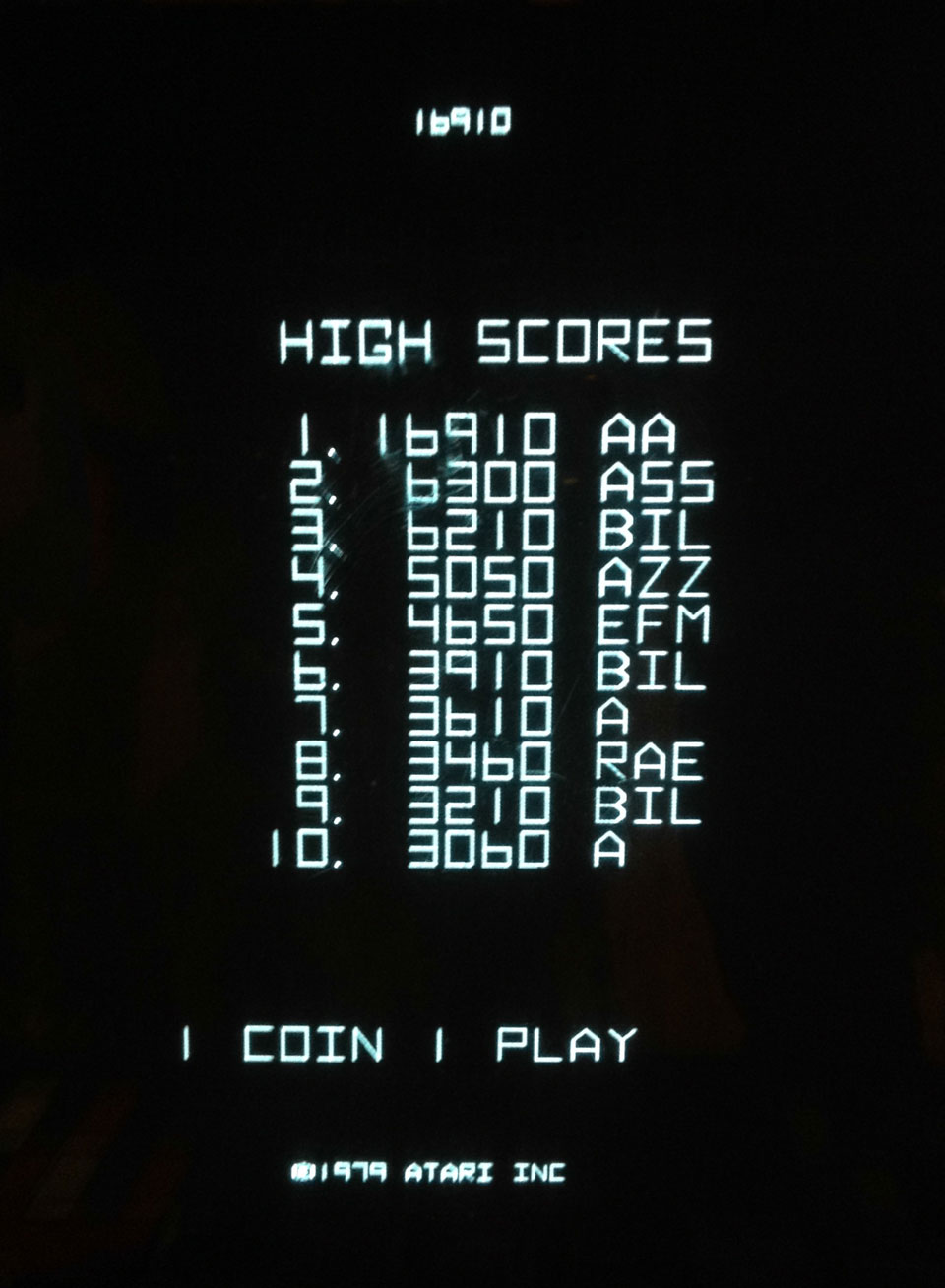
The most extreme example of this was Gottlieb’s Kan Yabumoto, who programmed the high score table for his seminal Mad Planets title to display his full name. Kan placed his 3-digit first name (which was handy!) as the top score – KAN; and then spelled out his last name – YABUMOTO vertically down the left side as the first letter of each initial:
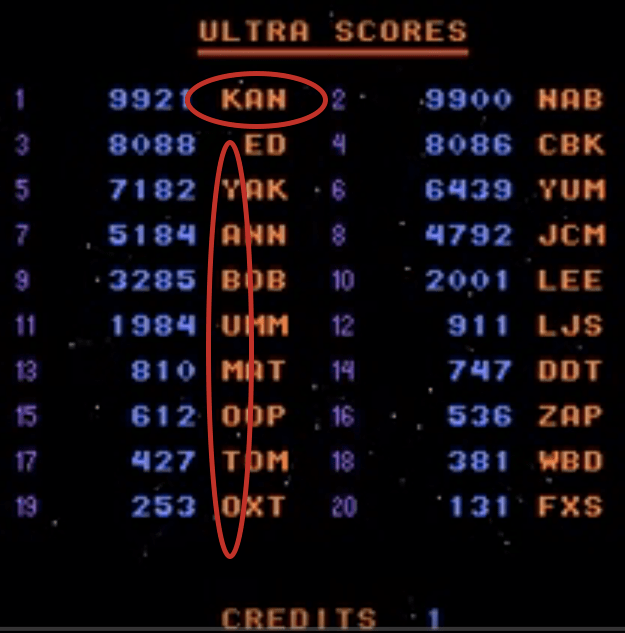
Gottlieb’s management apparently had no clue about this. By the time the game was done and out in arcades, there was little that could practically be done anyway. Kan sadly passed away in 2017, but this simple act ensured that his legacy would live on within the code of his creation.
Elsewhere the references tended to be more subtle. At Atari, to decide whose initials would be used on screen for default screens, unofficial competitions would take place within the labs just before the games’ releases.
Missile Command is no exception. During research for my book (which you can purchase here!) I discovered an interesting tidbit regarding the high score table. It is said that a two day “play-off” took place during the late programming stages of the game, with everyone who had a hand in its creation allowed to take part. The prize for the top scorers? Having their initials immortalised forever on Missile Command‘s attract screen:
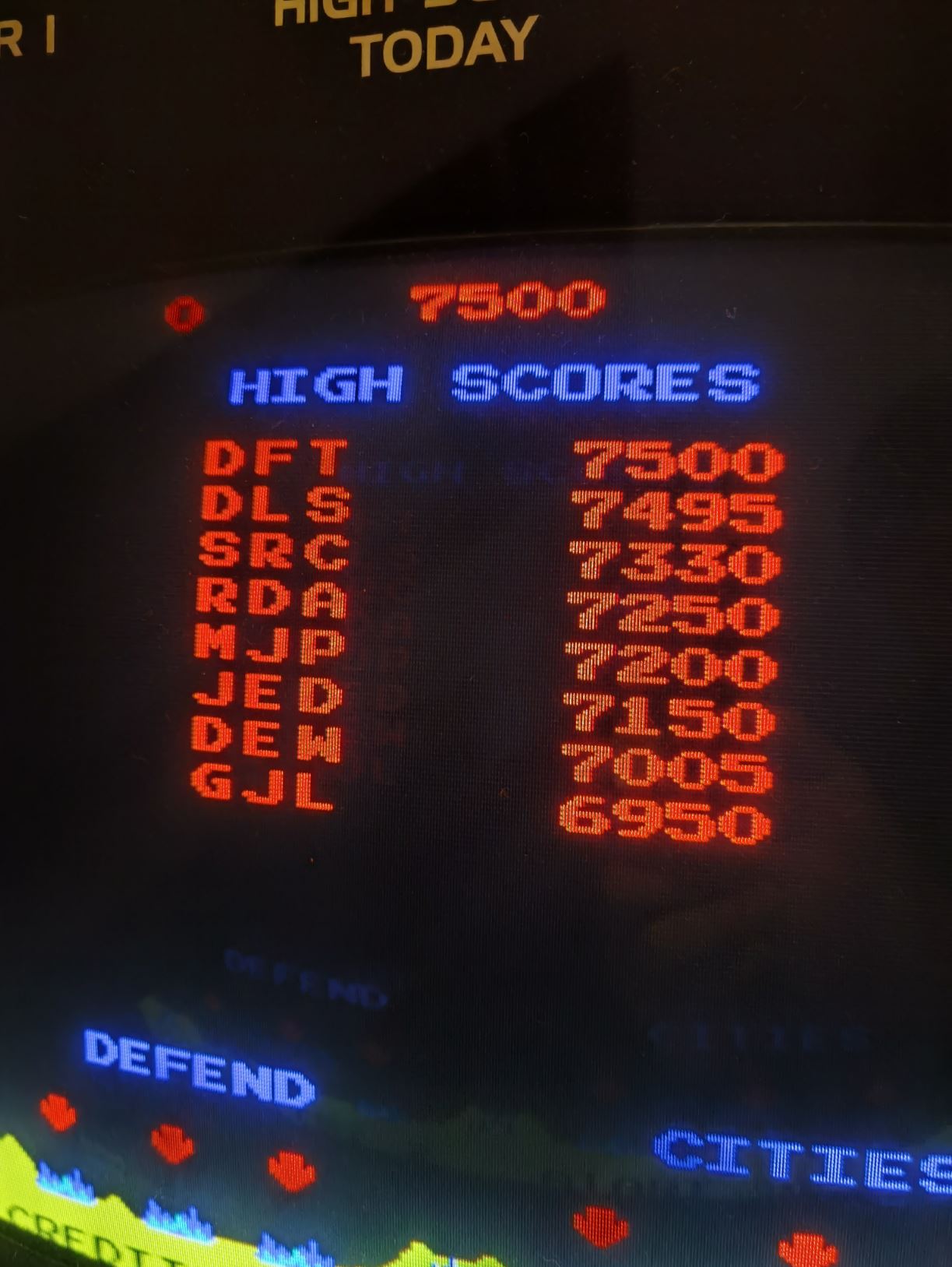
We can identify each set of initials:
DFT is Dave Theurer himself. The lead software engineer who created Missile Command. No surprise he took the number 1 slot.
DLS is Dave Sherman. Dave joined Atari right out of Berkeley during Atari’s heyday, and was the hardware lead on the game.
SRC was Steve Calfee. As chief Engineer of Software Engineering, Steve was Theurer’s boss, and was involved in the early conceptualisation of what would become Missile Command.
RDA is Rich Adam, junior programmer on Missile Command. Rich came up with the Bombers and Satellites on the game, and programmed many of the sound routines.
MJP was Mary Pepper, an electrical engineer at Atari’s coin op division.
JED would Be Jed Margolin. As head of Special Projects in Engineering, Jed designed the power supply of Missile Command as well as other hardware components within the game.
DEW is likely to be Dave Wiebenson. Although not listed as having a direct hand in the game, he was certainly around at the time, and his inclusion is likely as a result of his score during the informal competition
GJL is Gerry Lichac, the designer of Atari’s Trak-Ball, which of course is one of the critical components used in Missile Command.
A motley crew of Atari personnel, all of whom are immortalised by Dave Theurer’s programming, apparently, based on nothing more than their early prowess on Missile Command.
A couple of special mentions regarding high score tables:
Moon Cresta by Nichibutsu is a great shooter, not least of which because of it’s ability to allow players to enter up to 10 characters on the high score table. I recall countless examples of profanity and other shenanigans on machines in my local arcades. If you didn’t quite beat the number one spot held by “JOE SMITH”, you could easily enter “IS A WANKER” by way of revenge. Ahh the memories….
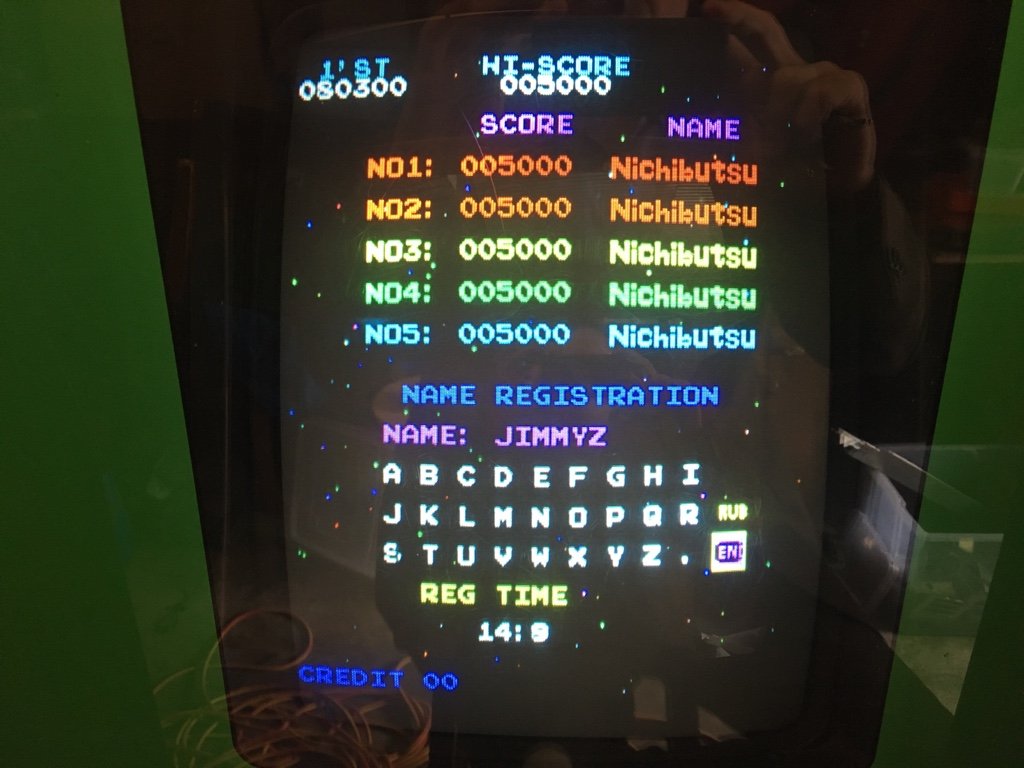
Atari’s Quantum, added a novel feature for the player achieving the highest score. To enter initials for a high score, the player manipulates the trackball to circle letters in the same fashion used during gameplay. If the player achieves the highest score on the table, the initials screen is preceded by another on which adept players can use the trackball to draw their initials.
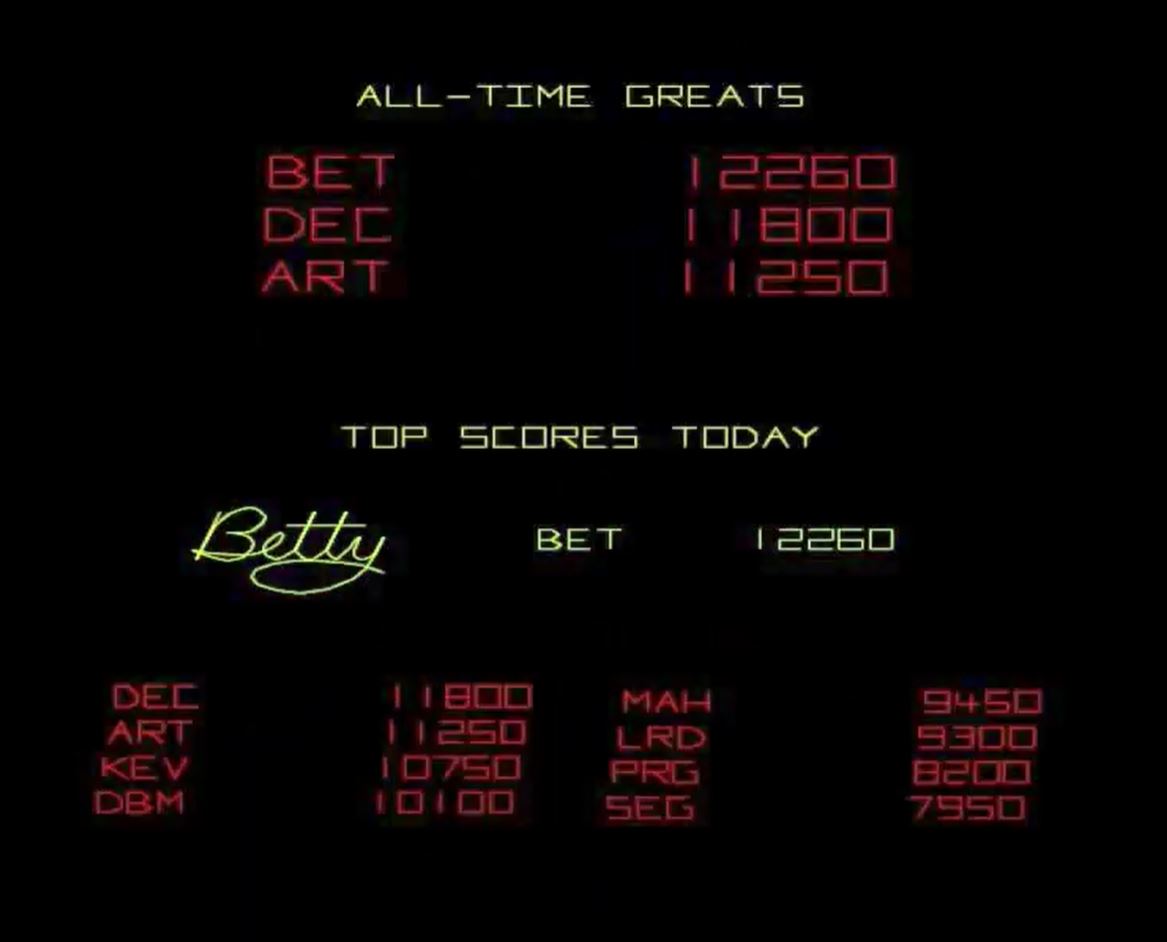
But come on, no teenager in their right mind is going to draw their name. And so as you’ve probably already figured out, if you came across a Quantum out there in the wild, it was likely to have clumsily hand drawn penises, boobs and other bodily parts adorned on it’s attract screen on a daily basis. There’s no accounting for the behaviour of the general public, but maybe in this case, perhaps it could have been anticipated. Or maybe a motivator to play?
So next time you walk up to a classic arcade machine, pause for a moment to take in the details on the high score screen – they often reveal more than you might think.
Thanks for reading this week.
Tony

Hey Tony! Wolfy here. Been unemployed for about 7 months now. Telling you this because I wanna buy your book and get your autograph when I can afford it. Will you be keeping them in stock for a while?
LikeLiked by 1 person
Wolfy! Plenty in stock. Whenever you’re ready sir! Good luck with the job hunting!
LikeLike
Love it.
1. AAA (lazy / cocky)
2. ZZZ (dismissive / cocky)
3. GOD (cocky – blasphemous and not that impressive at 3rd place)
4. ARS (unfortunate initials if legit – will give benefit of doubt)
5. TIT (tut…. kids….)
6. BUM (oh, grow up!)
7. DED (fair enough)
8. FUK (operator may want to flick the power switch off/on)
9. ACE (again, not that impressive at 9th)
10. BAH (that would have been me – as in BAH Humbug).
That was 1980s kid narcissism!
LikeLiked by 1 person
Good insight Barrie. I was definitely a lazy “AAA” player on most titles.
LikeLike
I somewhat liked my entering my initials in (especially “military” themed) games; “MAJ” fit in rather nicely. 😉
LikeLiked by 1 person
Great post Tony! I remember back in the day that on several Taito games, Bubble Bobble in particular, if you entered “sex” for your initials it would change it to something else but give bonuses on the 1st level of the next game played.
LikeLiked by 1 person
Great post Tony! I like your long post.
LikeLiked by 1 person
I was always rather pleased that the default Mad Planets high score table happened accidentally to contain both my usual arcade score table signing ‘YAK’ *and* my actual initials ‘JCM’.
LikeLike
Madly late to the party. But really loved this write up.
The Mad Planets shenanigans had passed me by, but I love it.
I love all Easter eggs in games and films, and this is another to add to the list.
AAA is certainly the default when not winning, but I like to think that when my parents chose my names, they spared a thought and gave me the initials NJM to save me havi big to scroll too far back and forward when inputting.
LikeLiked by 1 person
The arcade game Journey went a step further by letting people use a built-in camera to have a high score mug shot. Of course, that went badly, with unsightly pictures of certain anatomical parts… My favorite programmer initials is actually a picture of Ed Logg in SF RUSH 2049 in one of the “detours” off track.
LikeLiked by 1 person
Great Read! Thanks!
LikeLiked by 1 person